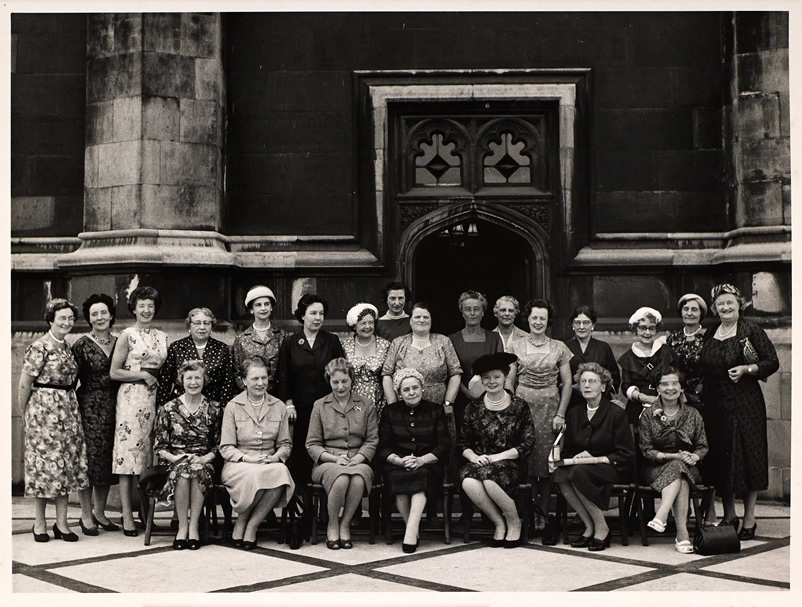Dame Irene Ward’s life is the main focus of Helen’s research in 2015, following on from her March 2015 lecture at Westminster.
Among the highlights of Dame Irene’s long parliamentary career, her involvement in the campaign for equal pay for women is perhaps her most lasting achievement. The following image shows women MPs elected in the 1959 General Election:

Women MPs elected in the 1959 General Election. Image reproduced with the permission of Parliamentary Archives, PUD/8/32. http://www.parliament.uk/archives
The names of the women MPs who worked closely with Dame Irene in the campaign for equal pay for women are highlighted in bold.
Standing, left to right: Harriet Slater, Lena Jeger, Patricia McLaughlin, Alice Cullen, Joan Vickers, Alice Bacon, Megan Lloyd George, Lady Gammans, Bessie Braddock, Elaine Burton, Evelyn Emmet, Barbara Castle, Mary McAlister, Jean Mann, Joyce Butler, Irene Ward
Seated, left to right: Lady Davidson, Edith Summerskill, Edith Pitt, Mabel Howard, Pat Hornsby-Smith, Florence Horsbrugh, Margaret Herbison
2015 Lecture at Westminster to mark International Women’s Day
A recording of Helen’s 2015 lecture on Dame Irene Ward given at Westminster to mark International Women’s Day is below:


